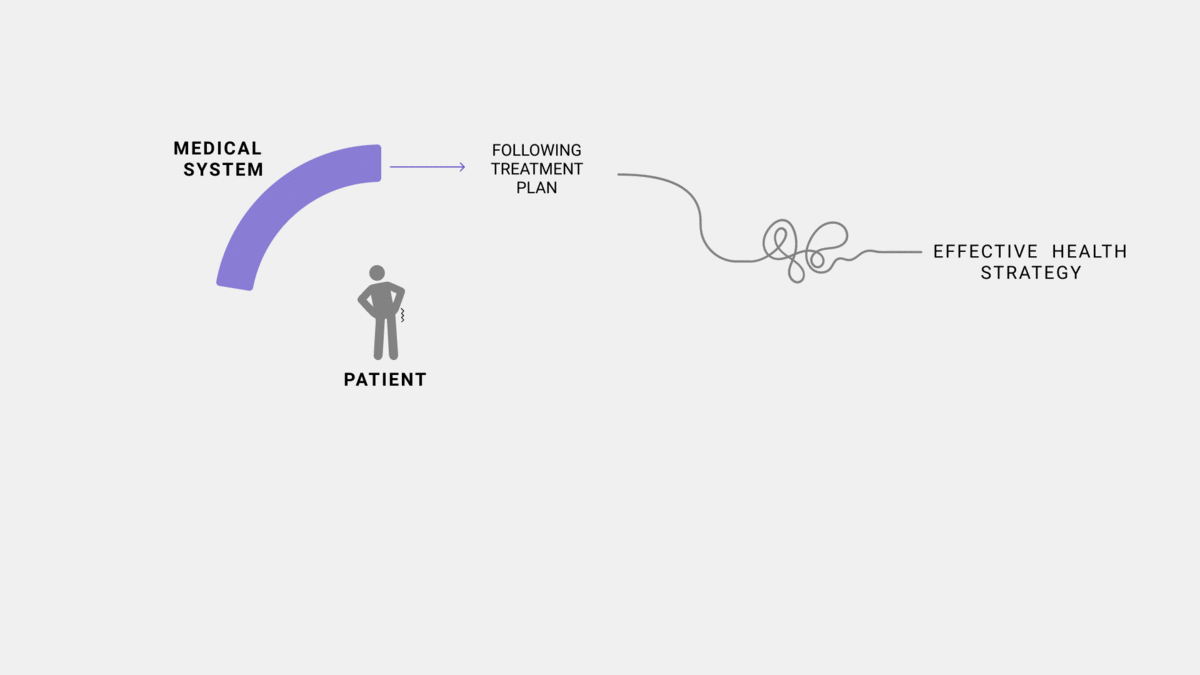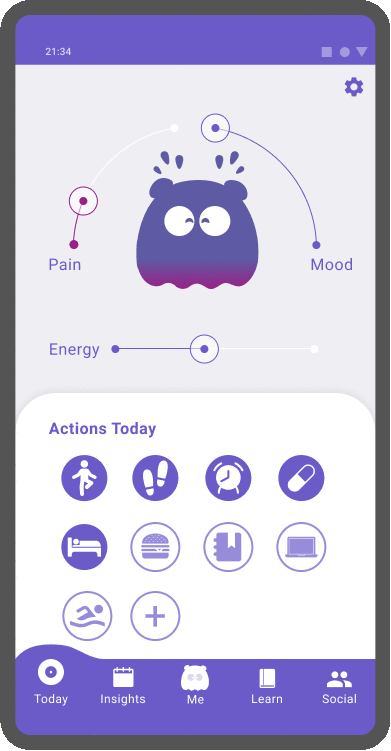
KOOS
DESIGNING HOLISTIC SUPPORT FOR
ARTHRITIS PATIENTS
Koos is the result of a 4-month project in collaboration with the North Estonia Medical Centre PERH, aiming for encouraging and enabling Arthritis patients to stay physically active.
As one of the top health service providers in Estonia, PERH is interested in making its services highly effective for both patients and doctors. That is why the orthopedic department was looking for a way to enhance patients’ treatment adherence, especially in regard to the physical activity recommendations.
This was a teamwork project in which I participated in the research stage, concept and service design, and visual communication. Throughout the project, I was able to use my knowledge in co-design methodologies, strategic thinking and graphic design.
Partner: PERH (North Estonia Medical Centre).
Type of work: Design research, service design and UX.
Collaborators: Harm Jan Grinwis and Robert Männa.
Mentors: prof. Martin Pärn and Ruth-Helene Melioranski.
Project length: 4 months.
THE PROBLEM
Physical activity (aerobic and strength) for Arthritis patients assures the joints' longevity and recovery before and after the replacement surgery. However, although they are part of their treatment recommendations, few of them actually keep an active lifestyle.
What is the cause for the low treatment adherence? What does mean physical activity for patients? How does pain affect life and activeness? and how is patients' relationship with the healthcare system?
LOW
ADHERENCE
COMPLEXITY OF PAIN
LIMITED HUMAN RESOURCES
Patients’ difficulty to stay motivate
Lack of holistic approach
for health treatments.
Lack of health professionals in Estonia for long-term support.
THE PROCESS
For understanding the complexity of pain, we needed to provide a welcoming and safe environment for encouraging people to share stories that are not always easy to tell. Therefore, the research was conducted by the following methodologies:
-
Literature research and medical documentation review.
-
Interviews with 5 medical experts and 2 patients.
-
Survey with 10 people
-
System mapping, user journey and service blueprint.
-
Cultural probe for 5 patients to understand their medical journey, main physical activities, social relationships, health system connection, and future projections.
-
Workshop with patients to analyze the power balance in the decision-making between patients and doctors.
-
Online Co-design workshop with patients and experts, aiming to create a shared vision of collaborative relationships and long-term support.

CULTURAL
PROBE
The design research started with a Cultural Probe with 5 patients. It was a 5 days activity aiming to provoke reflection about the effect of their health conditions in their daily life.

One important finding from this activity is that there is not synchrony between Doctor's recommendations and the patients' real actions.

WORKSHOP
WITH PATIENTS
In order to validate previous findings, we ran a workshop with Arthritis patients, for reflecting and talking (to us) about the power balance in the decision-making regarding their own health, and how this affects their physical activity motivation.

We later held a virtual co-design workshop with patients and doctors for creating a collaborative relationship, aiming to search together treatment strategies for each patient.
INSIGHTS
Our research showed us that every patient is unique, meaning each medical journey and strategies to cope with chronic pain should be different, we extended this concept to physical activity engagement. With this statement leading our research, the following are the main insights found during the research:

Every patient’s journey is unique

Social activity encourages action

Long-term illness requires long-term support
PAIN POINTS
A fragmented health system can not provide support on the experimentation to find those strategies, meaning a lot of energy and time in failed attempts. We envision this, as an opportunity to build with the healthcare system, service providers and patients a network who support each other in the long term.


THE DESIGN
Koos transforms Arthritis patients’ relationship with their symptoms and medical experts through a service network that helps them to explore and follow the best strategies to treat their chronic pain by staying active.
The service interacts with patients in three main ways.
.jpg)
KOOS ROOM
Physical meetings, guidance, group trainings and talks.
KOOS PLATFORM
Tracking and reflecting about symptoms, connecting with people through events and sports practices
KOOS TEAM
Onboarding and assistance, contact with service providers and validating shared information
Koos helps patients to keep moving by bringing them together with each other and sports services. It lets users track their symptoms and actions to reflect on their progress and share this information with their doctor. Koos provides the long-term support patients deserve while empowering them to become experts themselves.


Develop self-knowledge through the finding of personal strategies.
-
Track symptoms.
-
Reflect on the causes of pain and the effects of the new activities to try on.

Finding long-term support.
-
Connect with patients and experts.
-
Try sports and activities that may help with symptoms.
-
Learn about people’s experiences.

Create a Patient-Doctor collaborative relationship
-
Communicate symptoms and doubts assertively.
-
Enhance long and holistic support.
Koos helps patients to keep moving by bringing them together with each other and sports services. It lets users track their symptoms and actions to reflect on their progress and share this information with their doctor. Koos provides the long-term support patients deserve while empowering them to become experts themselves.
.jpg)
Koos Service Blueprint

IMPACT & COMMENTS
Patients that worked on the probe reported being more aware of their symptoms by being reconnected with their medical journey.
Medical experts we worked with saw the value in having a service that helps patients to communicate better about their conditions and to be more aware of the activities that actually work for them, so the treatment becomes a collaborative process.
CREDITS
KOOS could not have come to be without our collaborators. Many thanks to Aili, Chris, Chuck, Eelika, Eero, Fiona, Le, Mare, Richard, Taavi and Timo, for their invaluable contributions.
Project graphics provided by:
https://dribbble.com/shots/6237256-Jelly-Monster
https://www.freepik.com/stories